
OEO: Target setting to target success
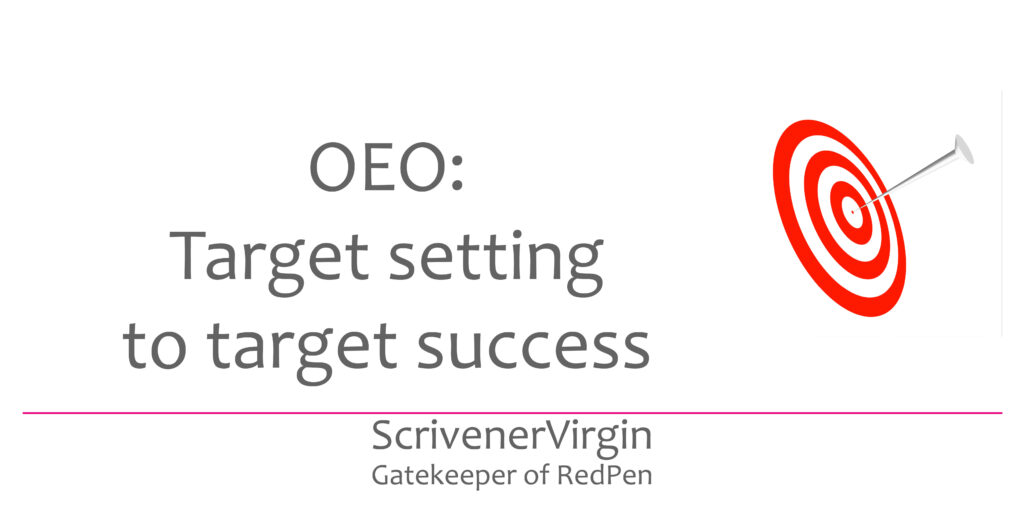 This series of posts is all about using Scrivener to overcome editing overwhelm, but also to overcome any kind of overwhelm that arises during the process of turning a blank page into a published book. This is a guide for me (my team) …
This series of posts is all about using Scrivener to overcome editing overwhelm, but also to overcome any kind of overwhelm that arises during the process of turning a blank page into a published book. This is a guide for me (my team) …
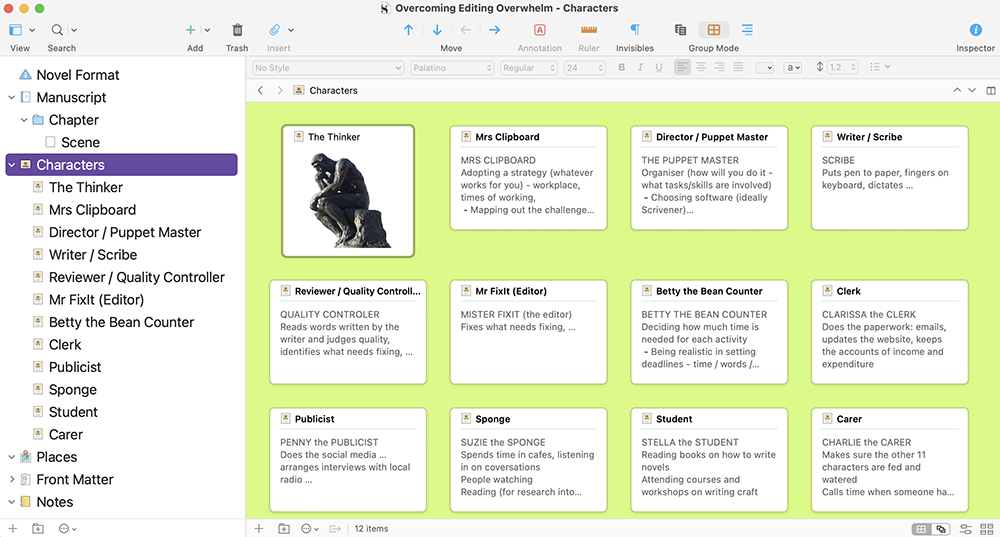
… and I’m hoping it will provide some answers for you, my readers.
After the introductory post, the next two posts offered two strategies for avoiding/overcoming stress in general: one from my Editing the RedPen Way and another from Vee Freir’s excellent book: Calm Yourself.
There’s been nothing about Scrivener so far!

Executive functions
In my team, there are 12 characters, each of whom needs to function well, if not brilliantly, if I’m to produce something I’m proud to share with my readers and writer clients.
These twelve characters each have their individual roles – and job titles – and stresses, which might result in overwhelm, but there’s also much overlap in the skills they need to be useful members of my team. Let’s call these executive functions – skills they need to execute their role.
- The ability to anticipate what’s coming up and make plans accordingly – see also number 8, flexibility!
- The ability to organise – thoughts, ideas, the scenes/chapters of my novels, …
- Reliability – doing what we agreed when we said it would be done (or earlier!)
- Getting up and getting on with the work – ie self motivation
- Managing our time to achieve the best results
- Paying attention to detail (quality …)
- Remembering stuff that’s important
- Flexibility – willingness to make changes in our plans or our approach
- Determination – ability to keep going
- Willingness to reflect on our own contribution to the team (and learn from it)

So, while my Mrs Clipboard needs to excel at item 1 – she is in charge of mapping out the challenges in order of execution – creating the battle plan – several others in the team also need to be passably good at anticipating what’s coming up and making plans. Charlie the Carer needs to anticipate the rate of tea consumption and make plans to purchase stock of tea bags? And so on …
Scrivener to the rescue?
However you comprise your team – yours might not be a 12-strong team like mine – Scrivener has features which will enable the individual members to tick off those executive functions.
In the posts that follow, I’ll be sharing features which will serve you (or one or more members of your team) well.
Today, as it’s nearing the end of October, and November is a time when many writers decide to try to write 50,000 words, one Scrivener tool is a must.
Setting targets
One way of keeping yourself accountable is to set yourself targets. Achieving them guarantees progress – and ensures you hit your deadlines. Success!
Scrivener offers two options for targets:
- Setting a target for the whole project
- Setting targets for individual documents
Setting a target for the whole project
Here’s how to set a target for the number of words in your manuscript:
- Select Project / Show Project Targets.
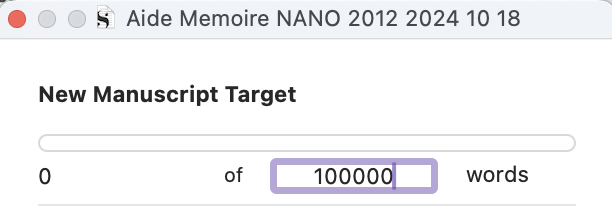 Overwrite the second 0 under the Manuscript Target display with the value 50000 (or however many words you hope to write).
Overwrite the second 0 under the Manuscript Target display with the value 50000 (or however many words you hope to write).- Click on the Apply button (bottom right of that window).
My target is 100,000 words because I’m planning to add an additional 50,000 words to my NaNo novel from 2012.
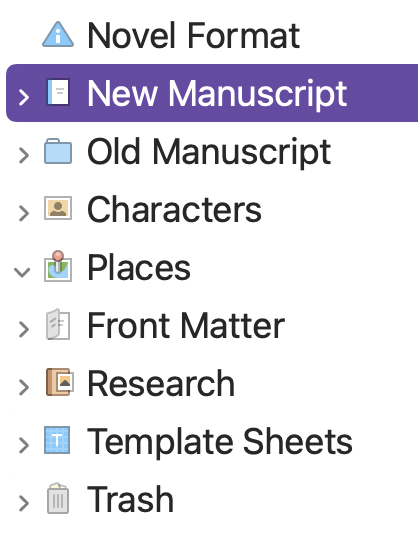
Scrivener also calls mine the New Manuscript Target because, in my Binder, I have the original manuscript plus a skeleton for the new manuscript.
To make Scrivener take into account the words I’ve already written (back in 2012), I dragged the Old Manuscript folder into what I’m assuming might be my final chapter of the finished novel. As each day passes during November, I plan to pull in the text from the old manuscript, one scene at a time, edit it (to change the POV and the tense I used originally) and then to add more material where I’d left myself notes to do so, when I wrote that first draft. So, the Folder ‘Old Manuscript’ should be empty by the time we reach the end of November!
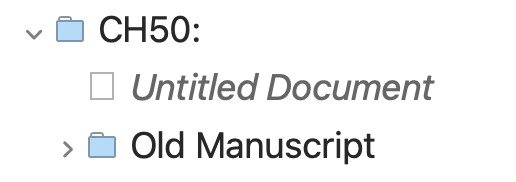
Scrivener then shows my progress. (Not that I’ve made any progress yet!)
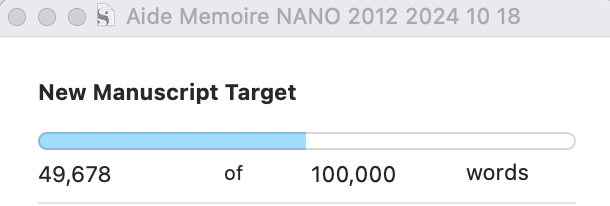
Session targets for the duration of your project
Scrivener can work out how many words you need to write today. First, set up a deadline date.
- Again: select Project / Show Project Targets.
- Click on the Options… button (left of Apply) and a new dialogue box appears.
- Enter the deadline date. For me, that’s 30/11/2024.
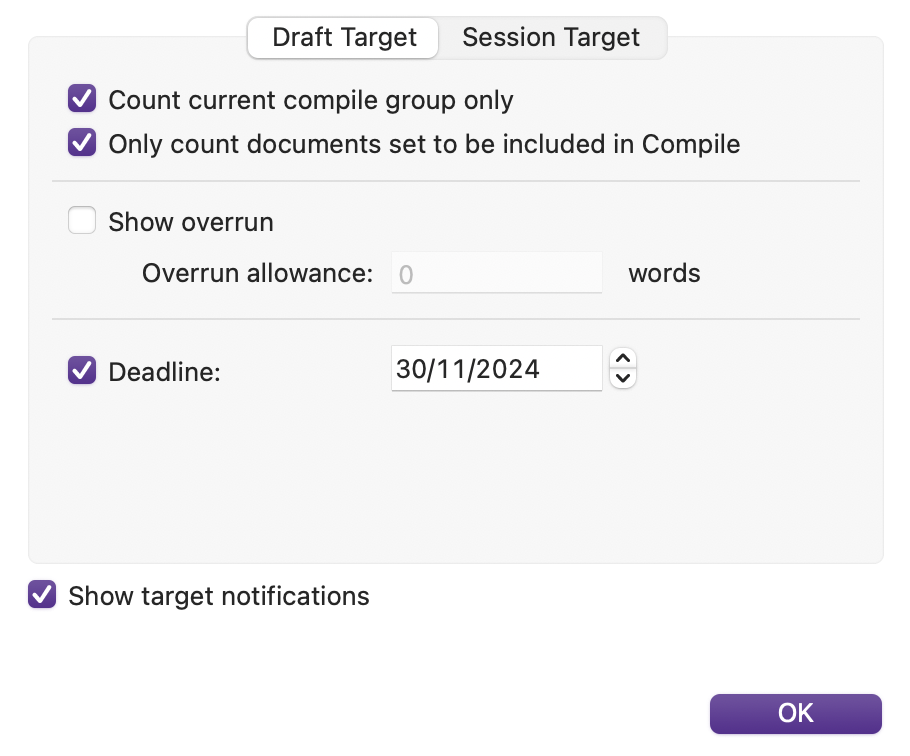
Notice the first two ticked boxes; this means that only words in documents that would be compiled are counted. That’s everything in your Manuscript folder and nothing from your Research folder (unless you’ve amended the standard Compile settings).
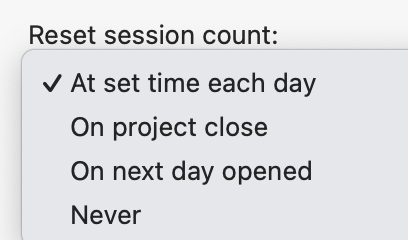
Now click on the Session Target tab (top right). I’ll set mine to reset ‘At set time each day’, the default setting being midnight each day.
I tend to write every day – and you can write alongside me (see my RedPen Write-In schedule) – but you can also program Scrivener to give you days off. It will mean you have more to write on the other ‘writing’ days.
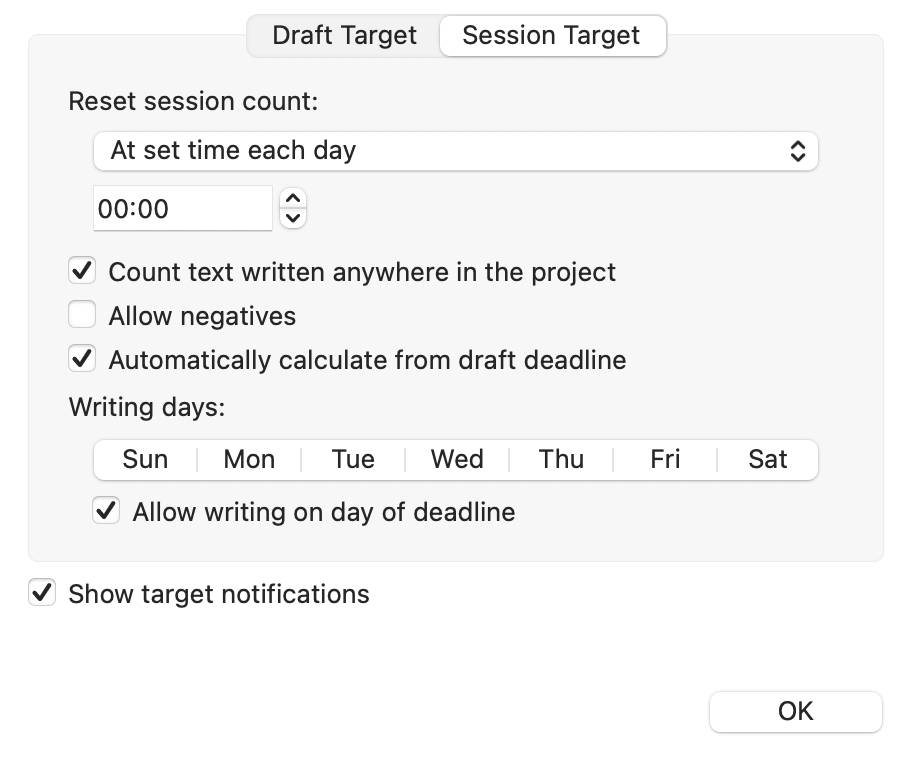
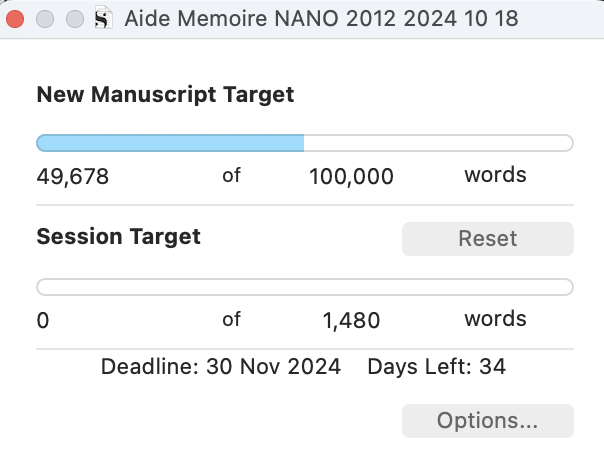 Next step is to tick ‘Automatically calculate …’ so Scrivener can show the session targets. Because, right now, there are 34 days until 30 November, Scrivener shows my daily target as only (only!) 1480 words for today. But I won’t start until midnight on Thursday, so that will creep up to nearer the ‘normal’ 1666 per day.
Next step is to tick ‘Automatically calculate …’ so Scrivener can show the session targets. Because, right now, there are 34 days until 30 November, Scrivener shows my daily target as only (only!) 1480 words for today. But I won’t start until midnight on Thursday, so that will creep up to nearer the ‘normal’ 1666 per day.
And, I’ve ticked the ‘Allow writing on the day of deadline’ as I’m sure I’ll still be clocking up words right up the deadline of midnight on 30 November.

Setting document targets
As well as setting targets for the whole project, you can set them for individual documents. I am not starting from scratch this year but, if you are, check out this blogpost …
where I explain how to set targets for each document.
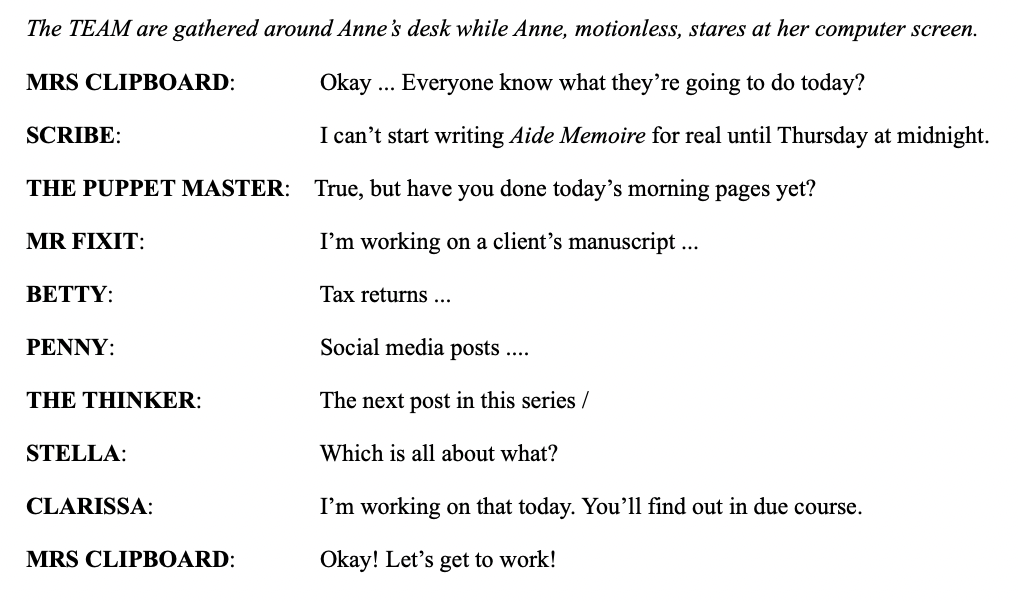
Questions about Scrivener?
Need a helping hand? Want a demo?
Book a Simply Scrivener Special session at a time to suit you.
And, if you need a steer on self-editing,
check out my RedPen Editing courses.
Join RedPen Editing for a free 5-day editing taster course.
Did you notice?
No adverts.
An uninterrupted read.
To thank me for posting this blog
and helping you, you could always
buy me a virtual cup of coffee!
The ScrivenerVirgin blog is a journey of discovery
To subscribe to this blog, a step-by-step exploration
of how Scrivener can change how a writer writes, click here.
Also … check out the Scrivener Tips
on my ScrivenerVirgin Facebook page.
Not yet using Scrivener?
Click here to download your free trial.




No Comments